
We know them. We love them. They've been around since before the first Walkman and they'll stay for a long time to come. Over the years, the general public have come to refer to both the male and female of the species as an 'Audio Jack', even though this is not technically correct.
To keep things easy, we'll use the term plug for male and socket for female whenever we need to be specific, and we'll pretend jack is genderless.
Once upon a time, what we now see as stereo jacks or headphone sockets were used in the telephone switchboards of the 19th century. Now, we have three main sizes measured by their diameter; 6.5mm, 3.5mm and 2.5mm, plus three major plug configurations:
 T = Tip, R = Ring, S = Sleeve
T = Tip, R = Ring, S = Sleeve
These days it's generally easier and more accurate to refer to each type by their Tip/Ring/Sleeve configuration to avoid any misunderstanding, especially when balanced audio is taken into account. This description works for all three sizes, so don't be put off that our diagrams show 3.5mm and not 6.5mm...
Professional-grade audio leads used for live performances sometimes have their own sets of rules (balanced/unbalanced/powered). In this article, we're only discussing unbalanced or 'general' use audio jacks.
Even now, the most common place to find an audio jack is on your MP3 player or personal computer. Just plug in your headphones and off you go. Both mono and stereo audio have been standardised for a long time to ensure equipment compatibility between analogue systems - even when adapted to RCA.
In the socket, the contacts which touch the plug haven't moved, and they're always connected (from top to bottom) as Left, Right, Ground in the case of a standard stereo jack.
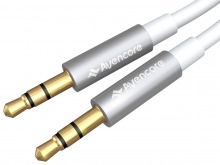
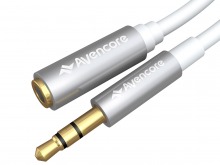
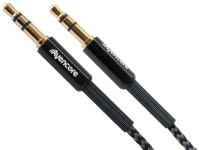
When it came time to add in a microphone channel, things went a little pear-shaped because there were two schools of thought on how to wire up the connections. One called CTIA, and another known as OMTP. Some manufacturers chose to change the socket in order to make the sleeve contact as the ground line (OMTP), while others chose to leave the ground contact where it was and squeeze the new channel in on the sleeve (CITA).

As you can see from the above diagram, there was a benefit to keeping the ground contact position unchanged, and this is the solution we see most often in headsets for personal computers, iPhones and many other smartphone and tablet brands. This was arguably the 'first' standard.
Thankfully, there are plenty of accessories what allow easy conversion between TRS 'Three-Pole' and TRRS 'Four-Pole' devices, allowing you, for example, to use a TRRS PC Gaming headset with a laptop that has separate Stereo and mic sockets.
Microphone audio wasn't the only type of signal this new contact could carry, and with the miniaturisation of cameras and camcorders, analogue audio and video output was soon upon us in the form of TRRS to 3RCA breakout cables.
Again, without a set standard, the pinouts inside the female socket from one manufacturer to the next could change. A Sony camcorder wasn't likely to work with a Panasonic AV breakout lead, because they didn't wire up the same way.
In some cases, you could swap the RCA ends around and still get picture and audio, but not always. And if the manufacturer moved the ground contact, things came unstuck anyway.

Why move the ground contact? If a manufacturer changed the pinouts, they prevented competitor and aftermarket accessories from working with their devices, possibly with the intent of forcing the consumer to buy 'the real thing'. You can thank the big brands for that one!
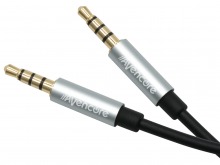
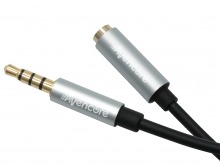
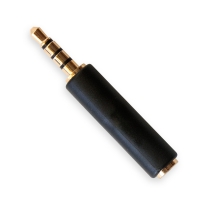
As you might imagine, plugging a TRS plug into a TRRS socket or vice-versa will result in an electrical short between one channel and ground. For the most part, a short like this isn't a great concern:

The diagram above shows a regular pair of earbuds plugged into an iPhone TRRS socket. This is perfectly safe and acceptable - you won't be able to make 'hands-free' voice calls, but you won't damage anything either. This also works for Android phones and many other devices.
Problems can emerge when mixing cables where the ground contact is not on the first ring. Nokia phones, Panasonic camcorders and portable/in-car DVD players have had their ground and video pinouts moved around in the past, so care must be taken to avoid damage when working with special equipment or trying to connect different types of product together. This is difficult when the cables look identical, but are wired differently. You don't want to send a lot of power over a shorted circuit.
In most cases, when dealing with audio, your first clue that something isn't right will be the loss of one stereo channel, or a lot of noise coming through. This is generally a sure sign that the pins aren't in the right place.
Unfortunately there is no universal one-shot product which can work with all devices, and it's nearly impossible to see inside the female socket to know where the wires go. In some cases, an adapter like the ones linked above will get ou out of trouble. In others, you'll need to buy a new accessory that matches the needs and pinouts of your hardware.
When it comes to camcorders, the best practice is always to seek an official accessory from the manufacturer or look for an aftermarket AV breakout lead which specifically lists your model of camera as compatible. We carry only a basic 3.5mm to 3RCA lead, and it isn't universally compatible. Adding a CTIA/OMPT apdater may help on some Camcorder models, but it wouldn't be many. With the push towards HDMI, this is becoming less of a problem.
Likewise for in-car DVD players using the TRRS socket - our breakout lead may work for some models, but there are too many out there for us to keep track of. If you have a multimeter and an existing cable, that's the best way to discover the pinouts and know what to shop for.
For stereo and microphone headsets, things are much easier. At most you might need to split a TRRS out into separate stereo and microphone plugs to suit your laptop or computer. We have one of those baby's right here: 10cm 4-Pole TRRS to 3.5mm Stereo & Microphone Adapter. Alternatively, an OMTP/CTIA adapter can bridge the gap between a stereo headset and the wrong brand of smartphone. We stock a bi-directional TRRS Standards Adapter for going between CTIA and OMTP or vice/versa.
Understanding TRRS as a format is only half the battle. Learning exactly what you need for a specific device can be much trickier. If you have questions or comments about TRRS or our available products, please fill out the form on our Contact page.